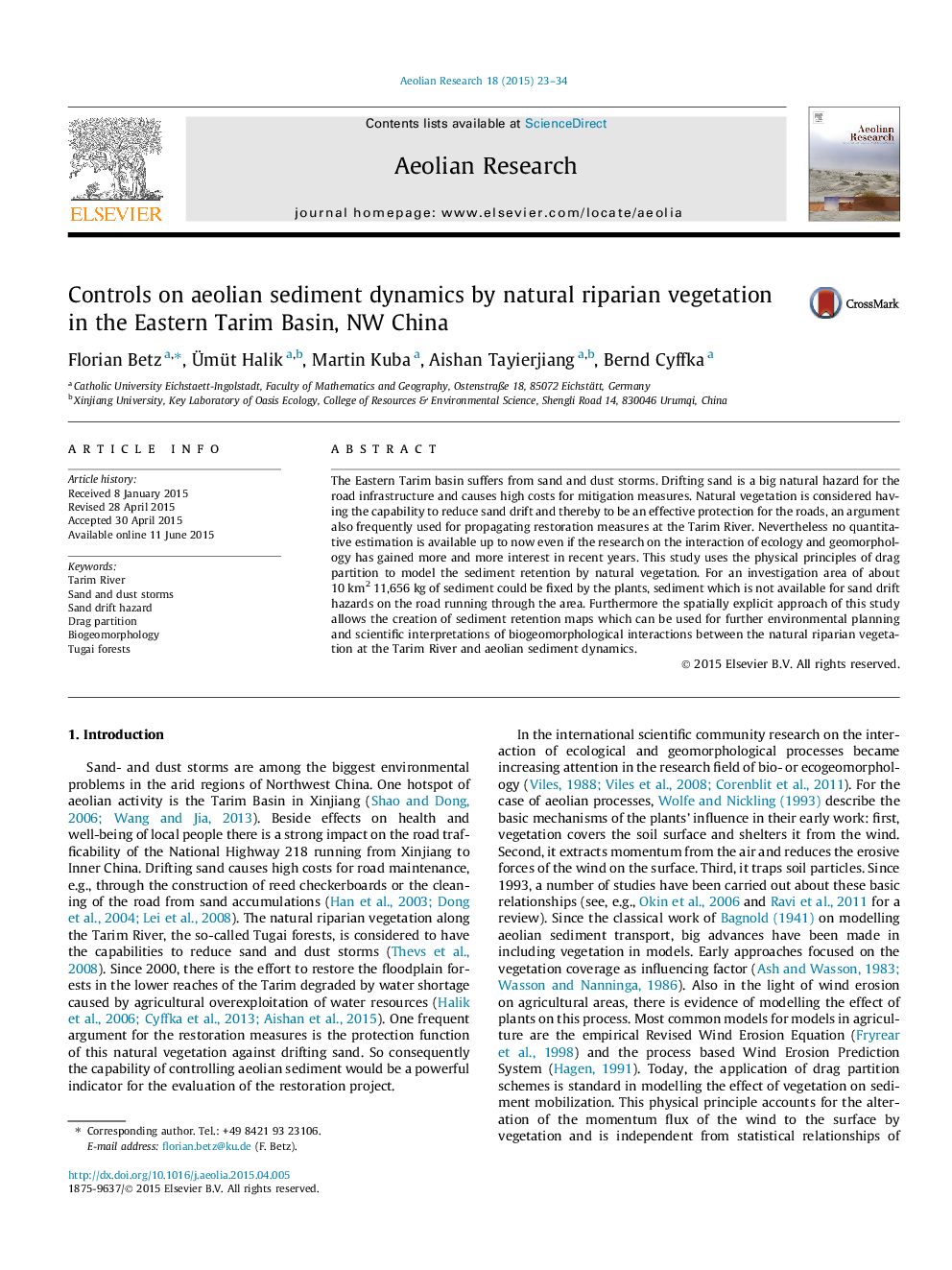| کد مقاله | کد نشریه | سال انتشار | مقاله انگلیسی | نسخه تمام متن |
|---|---|---|---|---|
| 6426392 | 1634109 | 2015 | 12 صفحه PDF | دانلود رایگان |

- Natural vegetation and aeolian sediment movement have been studied together in a biogeomorphological approach.
- A modification to the Integrated Wind Erosion Modelling System is used to estimate sediment fixation by natural vegetation.
- A quantitative estimation of the sediment fixation capacity of natural vegetation at the Tarim River is given.
The Eastern Tarim basin suffers from sand and dust storms. Drifting sand is a big natural hazard for the road infrastructure and causes high costs for mitigation measures. Natural vegetation is considered having the capability to reduce sand drift and thereby to be an effective protection for the roads, an argument also frequently used for propagating restoration measures at the Tarim River. Nevertheless no quantitative estimation is available up to now even if the research on the interaction of ecology and geomorphology has gained more and more interest in recent years. This study uses the physical principles of drag partition to model the sediment retention by natural vegetation. For an investigation area of about 10Â km2 11,656Â kg of sediment could be fixed by the plants, sediment which is not available for sand drift hazards on the road running through the area. Furthermore the spatially explicit approach of this study allows the creation of sediment retention maps which can be used for further environmental planning and scientific interpretations of biogeomorphological interactions between the natural riparian vegetation at the Tarim River and aeolian sediment dynamics.
Journal: Aeolian Research - Volume 18, September 2015, Pages 23-34